Project Profile
Project Location
Providence, RIProject Lead
Providence Neighborhood Planting ProgramFunder
City of Providence, Rhode Island Foundation Endowments, Rhode Island Department of Environmental Management, USFSBudget
$88,360The Providence Neighborhood Planting Program (PNPP) worked closely on this collaborative project with the Providence Forestry Division, Groundwork Rhode Island, students and staff at participating schools, the Providence Housing Authority, members of the Providence Tree Plan Steering Committee, community members, and residents.
Between September 2021 and December 2022, 190 trees were planted in the Upper and Lower South Providence and Washington Park neighborhoods of Providence, Rhode Island. The community which is 94% people of color, and which has suffered from decades of disinvestment, toxic polluting, low-tree canopy and other harms of systemic racism and environmental injustice. The main goal of this project was to directly address the disproportionate environmental health burdens that under-canopied and under-resourced areas bear, with a focus on poor air quality and urban heat island effect.
The heart of the project, both socially and geographically, was the Juanita Sanchez Educational Complex (JSEC): a five-acre plot of land which houses two Providence Public High schools. JSEC serves as a focal point in the community and almost completely treeless. Other planting sites included other K-12 school properties, street trees in front of homes and businesses, and on several public housing properties owned by the Providence Housing Authority. Most tree plantings were conducted by residents or students. Students and community members were empowered to plug in, develop social capital and take ownership of the tree planting projects that will lead to increased health and resiliency.
Funding for this project was provided in part through an Urban & Community Forestry Grant from the RIDEM Division of Forest Environment, in cooperation with the USDA Forest Service State Urban Forest Resilience (SUFR) Grant Initiative.
Check out a snapshot of the project: Impact Summary – PNPP Growing Canopy and Community in South Providence
Every tree planting project demonstrates impacts that create a more just and sustainable future.
Human Health
Urban Heat - 12
Active Living - 10
Wellness & Mental Health - 9
Social Health - 8
Social Equity
Site Selection - 7
Community Engagement in Design - 7
Community Participation in Implementation - 9
Economic Equity - 12
Environment
Climate Action - 13
Water Quality & Quantity - 8
Habitat, Food & Wood Production - 1
Bioremediation - 0
The 17 United Nations Sustainable Development Goals or SDGs are a global call for action. These goals have the power to build a better future for everyone. Investment in this impact project drives action towards the following goals.
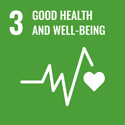
Neighborhoods on the south side of Providence have some of the lowest income levels and highest childhood asthma rates in Rhode Island. The project area is a state-designated Health Equity Zone, which is an area with longstanding social, economic, racial and environmental inequities which have resulted in adverse health outcomes for residents. Trees will provide a green buffer to protect people from air pollution from nearby I-95 and the Port of Providence.
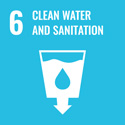
Trees were selected that perform well on city streets in the project climate zone. Urban tree cover can increase groundwater recharge, promote the infiltration of water in soils, and decrease stormwater runoff.
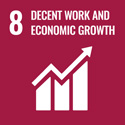
Local hiring and responsible sourcing of materials from local and reputable businesses can promote economic resiliency. Groundwork’s youth GreenTeam and its GroundCorp adult green-collar jobs trainees, many of whom were from the project neighborhoods, installed some of the trees, and will help water and maintain the young trees.
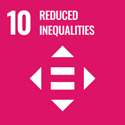
The project area is a location in which many social determinants of poor health converge. The emphasis on planting at and around neighborhood schools also means that children, who are especially vulnerable to poor air quality, will be key beneficiaries of the project’s design. Trees planted at school sites were collaboratively designed and planned with students and staff.
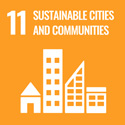
Particularly in the summertime, the project area is frequently hotter and has worse air quality than areas of the city with more trees and more distance from highways and industrial corridors. Trees will filter air by absorbing harmful air pollutants and providing a natural buffer. Trees will also provide shade and cooling benefits.
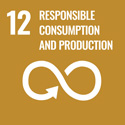
Trees lower cooling costs by reducing regional air temperatures and providing shade. They also act as a buffer against cold winds that strip away heat, thereby providing savings on the fuel needed to heat buildings. The project area is directly adjacent to the Port of Providence and consequently can get extremely windy, so trees will provide an important buffer.
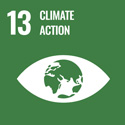
Trees and forests in and around cities contribute to climate-change mitigation directly by sequestering carbon and reducing greenhouse gas emissions. These project trees will store a projected 154.5 tons of CO2 if maintained for 25 years. Trees planted will also improve air quality, promote stormwater capture, and reduce heating and cooling costs.
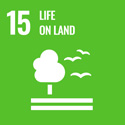
Project partners planted 50 tree species, with care taken to select trees that will perform well in the project climate zone. Soil volume and quality was maximized for tree survival. Trees will be on a two-year watering schedule — performed either by a contractor hired by the City of Providence, or through a community watering project coordinated by the Providence Neighborhood Planting Program.
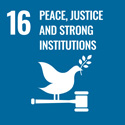
Project partners researched past and current sociocultural inequities and injustices. National, state, and local data supports the project area as a priority for expanding tree canopy. Project partners respectfully engaged residents and acknowledged past injustices. At an individual tree placement level, residents and stakeholders were given the opportunity to give input into the specific placement at each site.
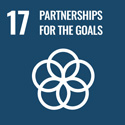
The planning and implementation for this project was executed collaboratively by PNPP, the Providence Forestry Division, Groundwork RI, students and staff at the participating schools, the Providence Housing Authority, members of the Providence (PVD) Tree Plan Steering Committee, and community members and residents.
